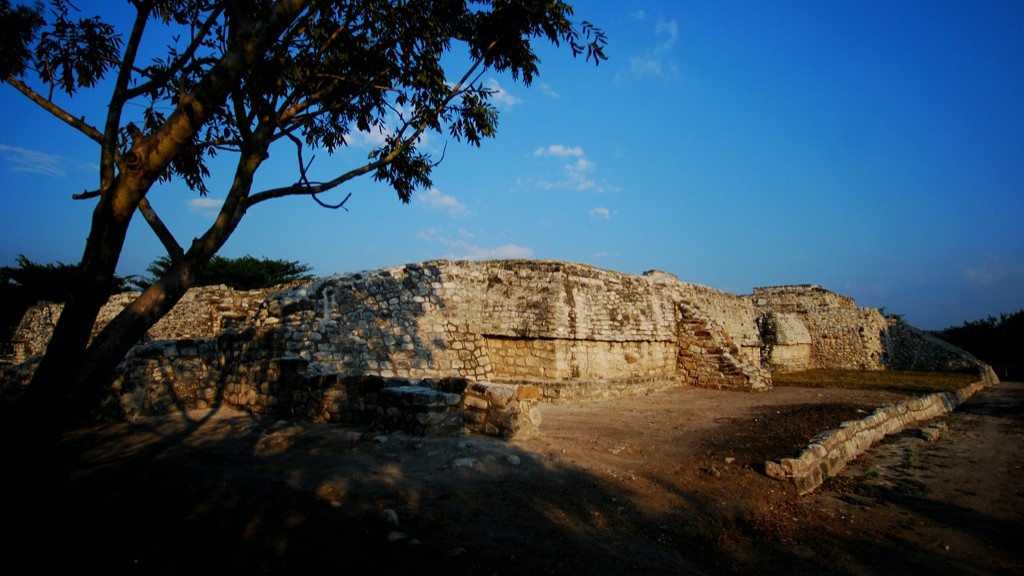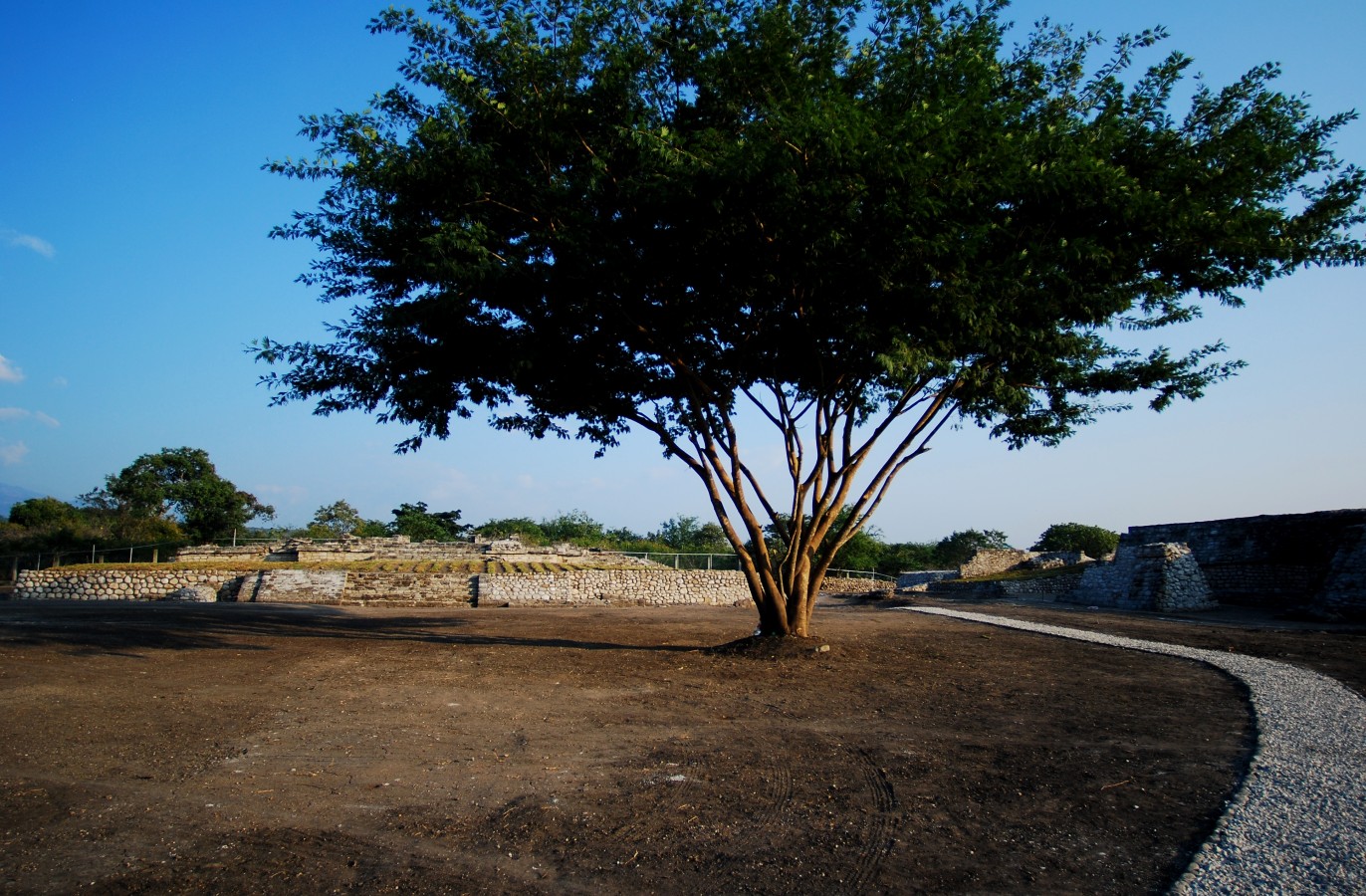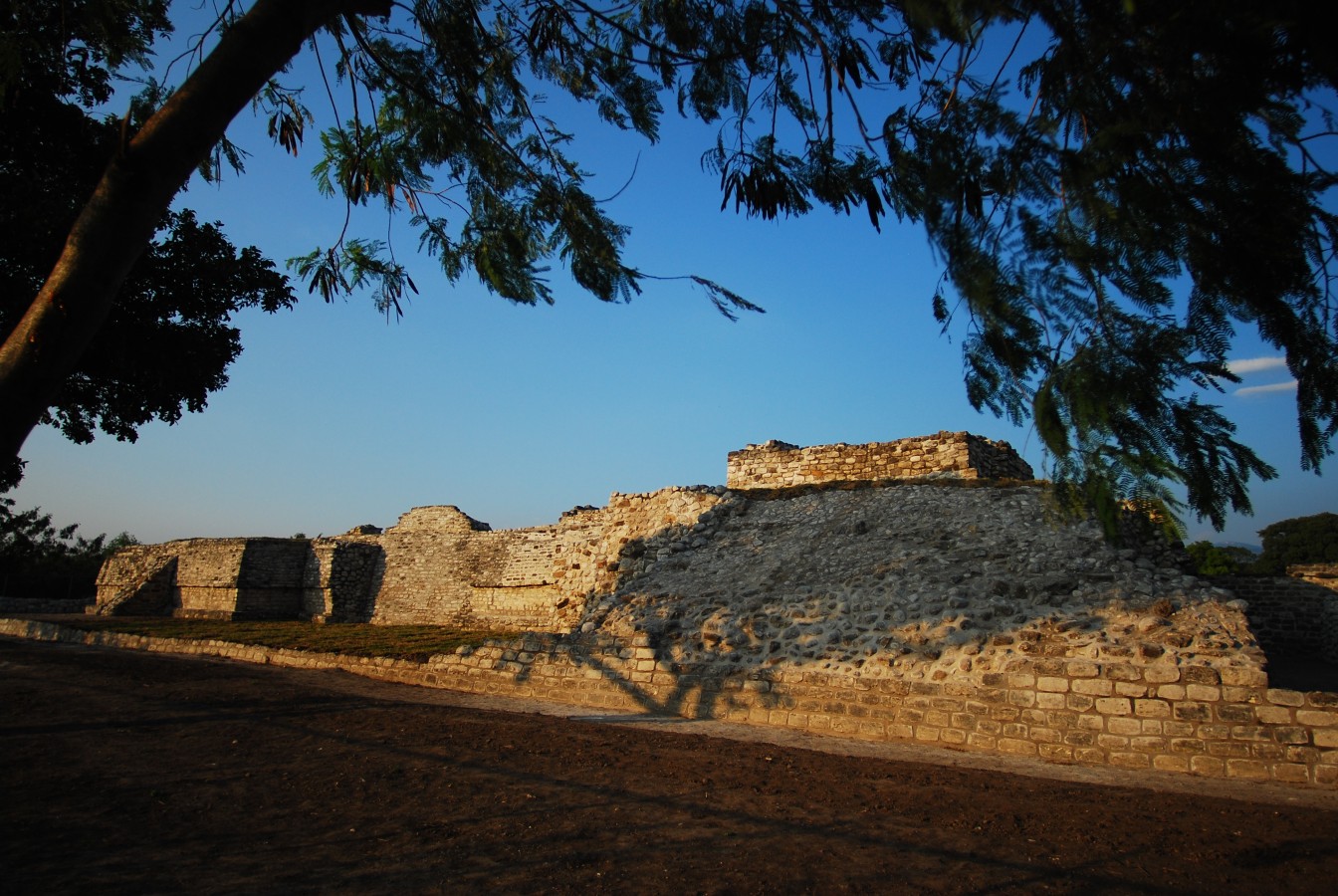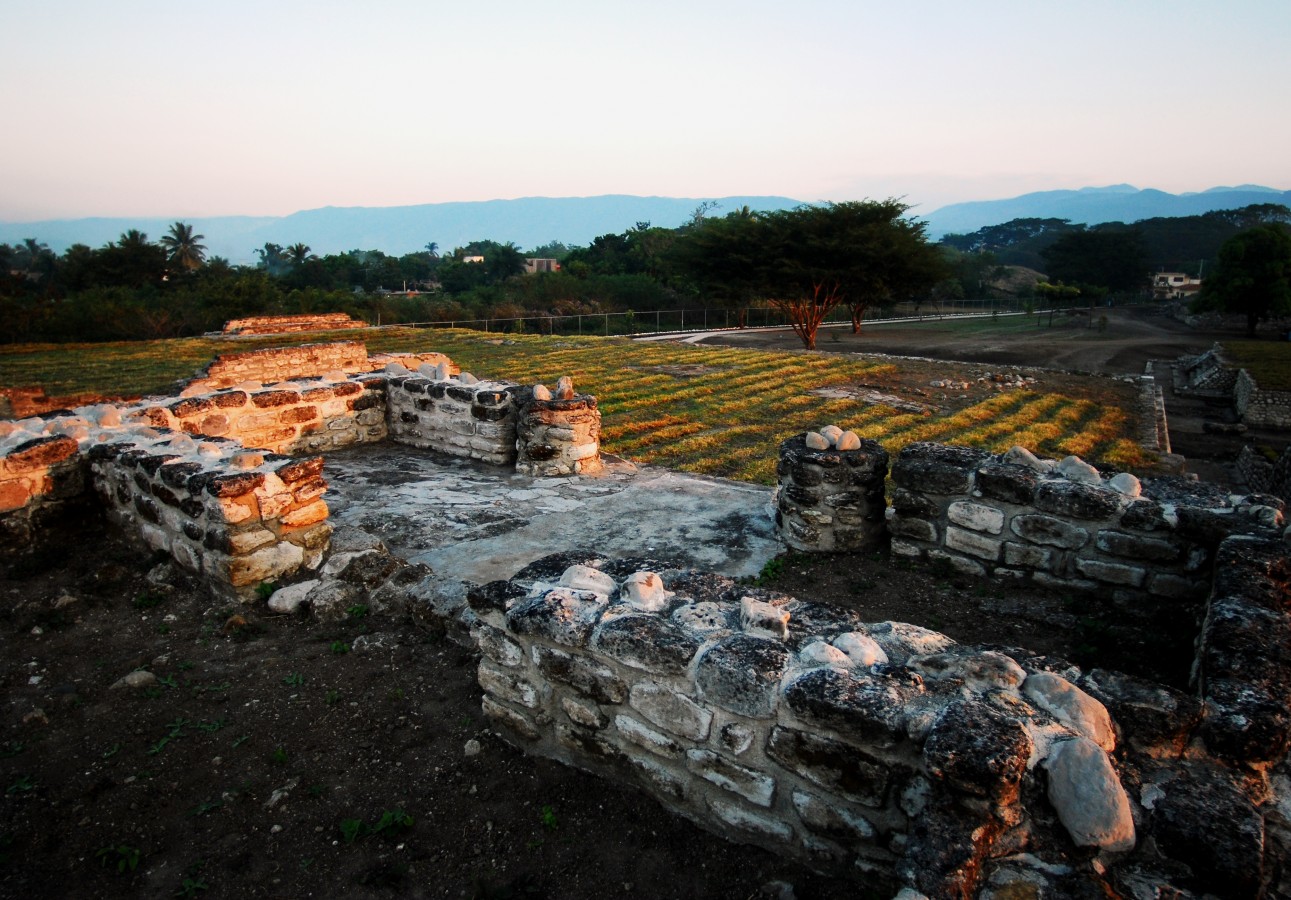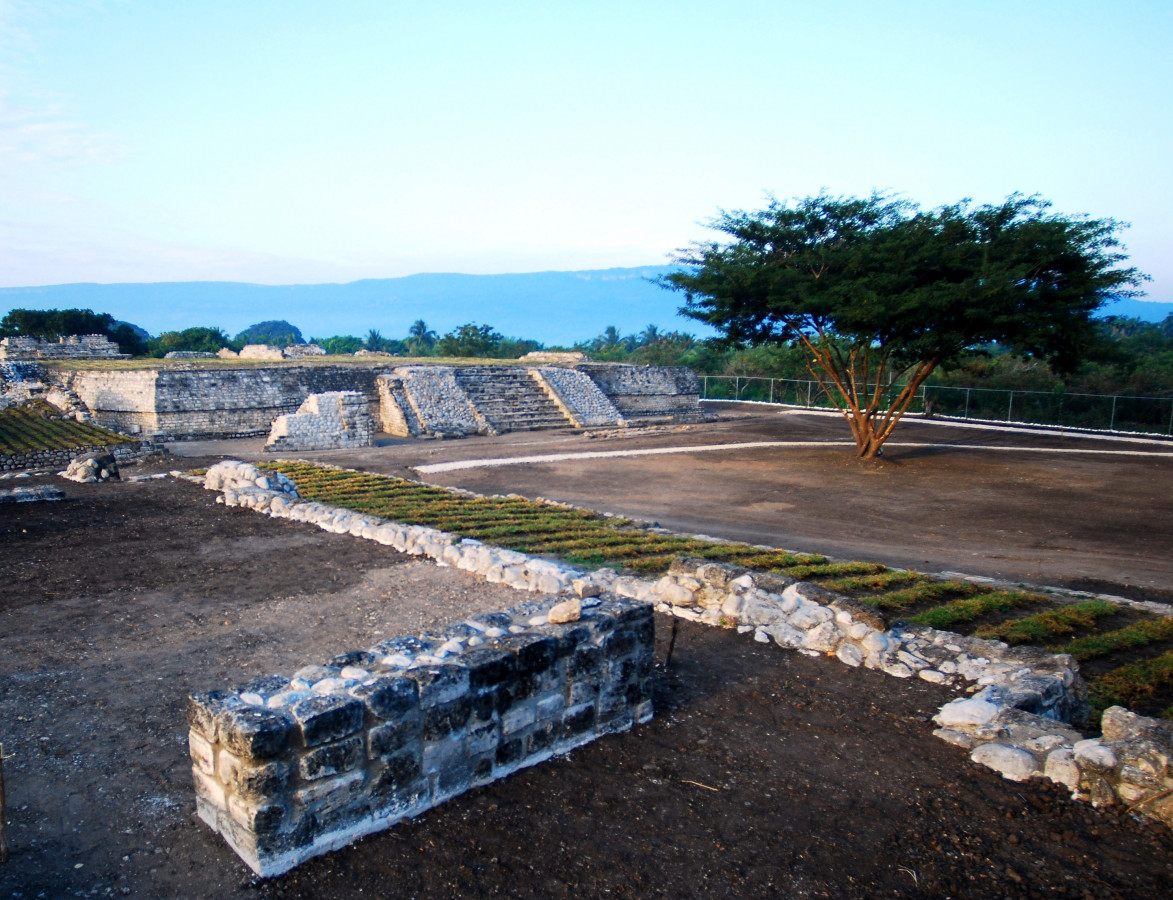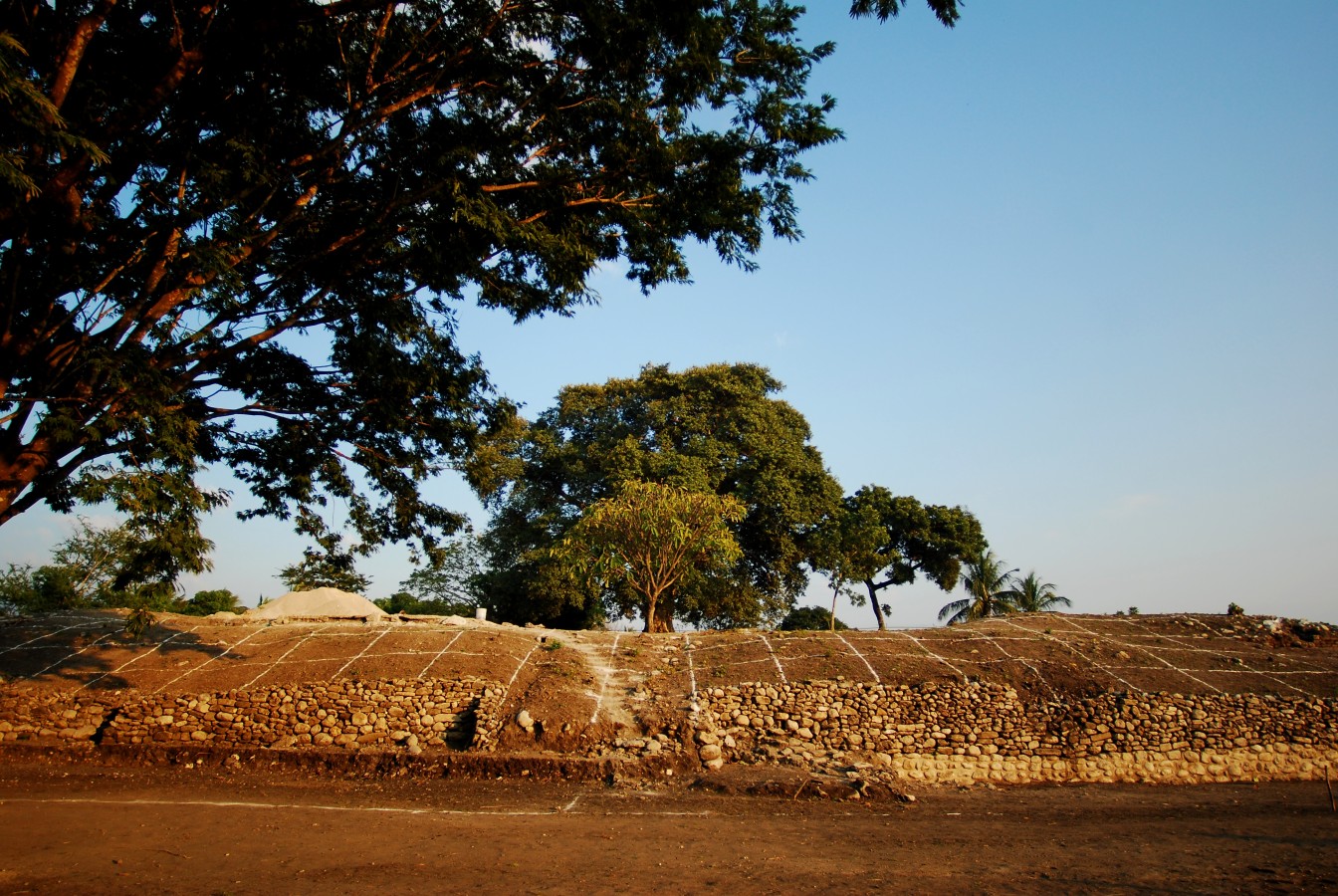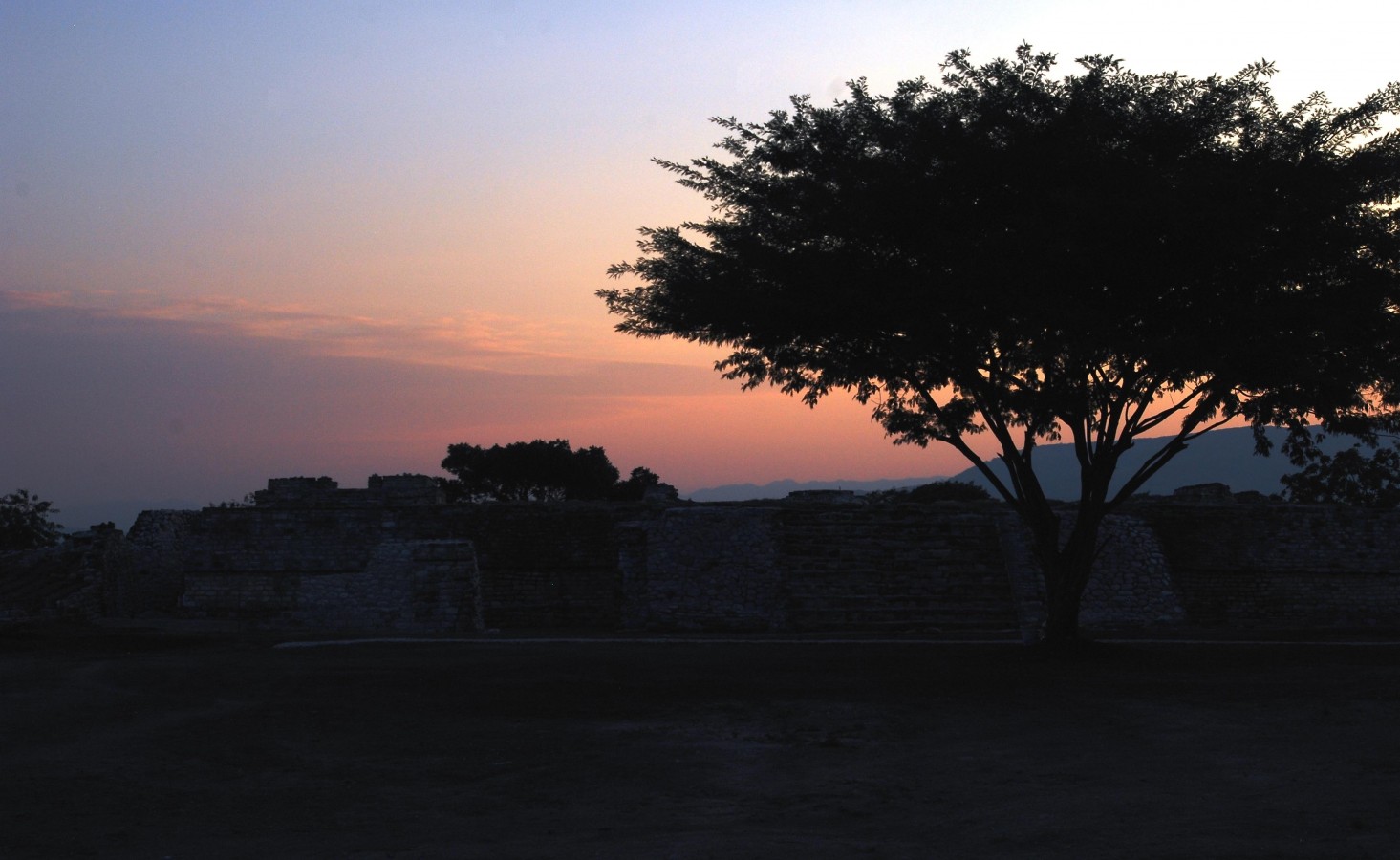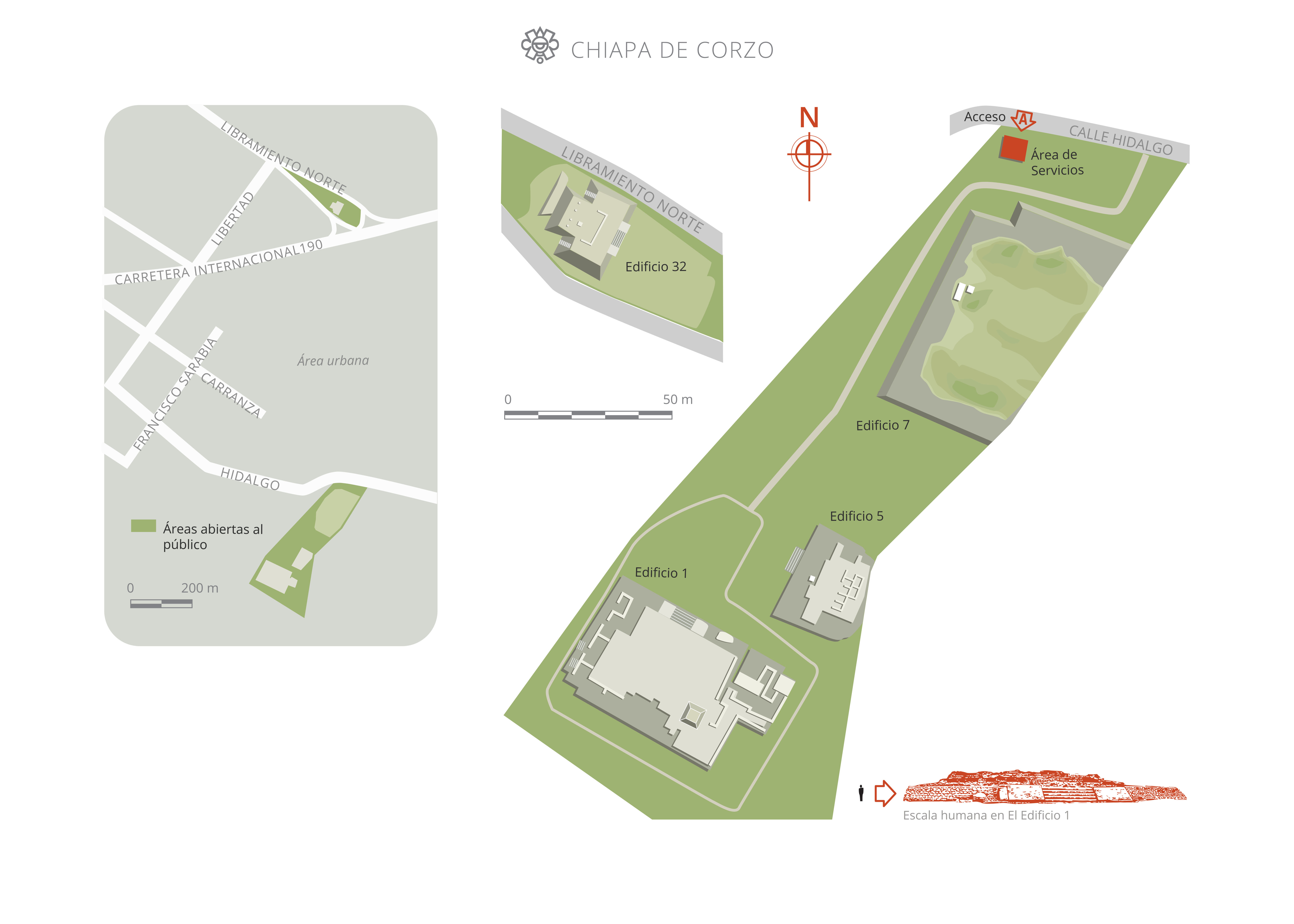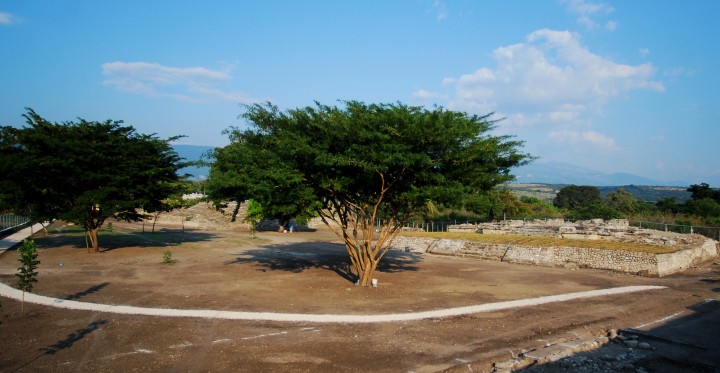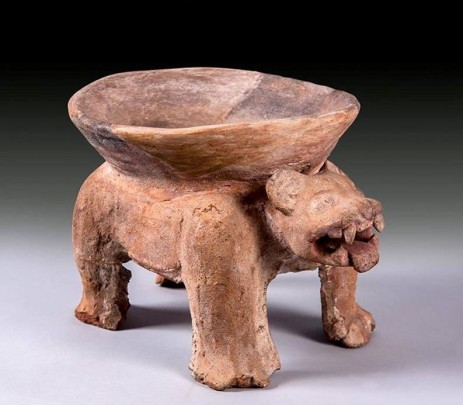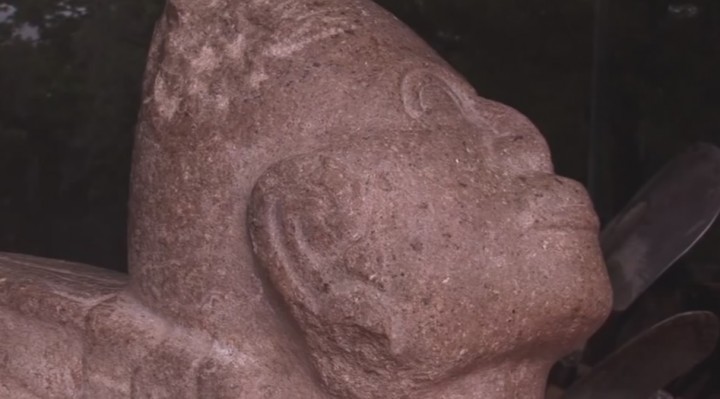Chiapa de Corzo
Place where chia grows
In the remote past this was an agricultural village on the banks of the river Grijalva and it became the most important ceremonial center of the Mixe-Zoque people. Its terraces, plazas and constructions, as well as the multitude of tombs with offerings and the ornamentation of the temples decorated with fine limestone, show its importance.
About the site
Chiapa de Corzo was one of the main pre-Hispanic settlements of the Chiapas Central Depression. Its location on the right side of the River Grijalva, on fertile alluvial terraces and at a crossing of important roads, allowed it to prosper and control trade from the Gulf coast to the Chiapas highlands.
The first occupation of the site was around 1250 BC, when it was a farming village, but it grew until it became of the the largest settlements of the Zoque region, and a focal point of the cultural and economic subregion. In its heyday, at the start of the Common Era, the main buildings were made from well-cut stone with red painted stucco-covered facades. The inhabitants established commercial networks with central Mexico, the Gulf coast and the Guatemalan Petén, as evidenced by the raw materials and objects which came from these areas.
After the year 400 AD it lost importance when it was subjugated by the Mayan and Zapotec centers which closed the trading networks. The site was completely abandoned 250 years later and around 900 AD it was occupied once again by the Chiapanecs, a group who arrived from somewhere to the south of the territory of Mesoamerica, speaking a language unrelated to Maya or Zoque, and who lived there until well into the colonial period.
The Chiapanecs made the most of the strategic location of Chiapa de Corzo to found their political capital, called Nandalumí or Napiniaca, very close to the remains of the previous culture, and when the Spanish arrived this was the largest and most important settlement in the region. Today what remains of the Zoque and Chiapanec structures are among the foundations of colonial and modern buildings.
At its peak, the center of the ancient Zoque settlement of Chiapa de Corzo had more than 200 buildings including temples, platforms and houses which were arranged around plazas and patios. Zoque buildings were erected on platforms, which had a general T-shaped plan, and were decorated with moldings which gave the bases a particular profile, known as “cabin profile.” The principal façades of the platforms have wide stairways with double balustrades, a Zoque architectural feature very typical of the place.
Between the structures which may be visited today are those which make up the most ancient and important part of Chiapa de Corzo, Buildings 1, 5, 7 and 32, where the Zoque carried out ritual and administrative activities.
Of these 1 and 7 functioned as temples with several rooms and porticoed entrances. Building 1 had an additional function, as the burial place of priests and governors, whose tombs included substantial offerings. It is thought that Building 5 could have been the governor’s house because of its numerous rooms.
Building 32 is a temple with architecture typical of Chiapa de Corzo. It is located on the northern edge of the site’s core area, which today is next to a road junction of the Chiapa de Corzo northern bypass and the Panamerican Highway, or Federal Highway 92.
Mounds 11 and 12, which are not open to the public, are, together with Mound 13 and Building 7, the most ancient parts of the monument zone of Chiapa de Corzo. Some researchers propose that these two mounds form part of a building group dedicated to astronomy, since its configuration is very similar to the so-called E Complex of the Maya: two buildings from which solar measurements were undertaken.
The significance of this complex at Chiapa de Corzo is demonstrated by the burials and the set of artifacts recently discovered there. For example, rich offerings and burials of elite personages were found there between 2008 and 2010. Among the offerings found inside and at the foot of these mounds were groups of axes and fine Olmec-style ceramics, which are evidence of contact with peoples from the Gulf coast. The most important burial was inside Mound 11 where one of the place’s first governors was buried between 700 and 500 BC, accompanied by a lower-ranking boy and a woman. The personal adornment of this governor included more than 1,000 pieces of jade.
The first occupation of the site was around 1250 BC, when it was a farming village, but it grew until it became of the the largest settlements of the Zoque region, and a focal point of the cultural and economic subregion. In its heyday, at the start of the Common Era, the main buildings were made from well-cut stone with red painted stucco-covered facades. The inhabitants established commercial networks with central Mexico, the Gulf coast and the Guatemalan Petén, as evidenced by the raw materials and objects which came from these areas.
After the year 400 AD it lost importance when it was subjugated by the Mayan and Zapotec centers which closed the trading networks. The site was completely abandoned 250 years later and around 900 AD it was occupied once again by the Chiapanecs, a group who arrived from somewhere to the south of the territory of Mesoamerica, speaking a language unrelated to Maya or Zoque, and who lived there until well into the colonial period.
The Chiapanecs made the most of the strategic location of Chiapa de Corzo to found their political capital, called Nandalumí or Napiniaca, very close to the remains of the previous culture, and when the Spanish arrived this was the largest and most important settlement in the region. Today what remains of the Zoque and Chiapanec structures are among the foundations of colonial and modern buildings.
At its peak, the center of the ancient Zoque settlement of Chiapa de Corzo had more than 200 buildings including temples, platforms and houses which were arranged around plazas and patios. Zoque buildings were erected on platforms, which had a general T-shaped plan, and were decorated with moldings which gave the bases a particular profile, known as “cabin profile.” The principal façades of the platforms have wide stairways with double balustrades, a Zoque architectural feature very typical of the place.
Between the structures which may be visited today are those which make up the most ancient and important part of Chiapa de Corzo, Buildings 1, 5, 7 and 32, where the Zoque carried out ritual and administrative activities.
Of these 1 and 7 functioned as temples with several rooms and porticoed entrances. Building 1 had an additional function, as the burial place of priests and governors, whose tombs included substantial offerings. It is thought that Building 5 could have been the governor’s house because of its numerous rooms.
Building 32 is a temple with architecture typical of Chiapa de Corzo. It is located on the northern edge of the site’s core area, which today is next to a road junction of the Chiapa de Corzo northern bypass and the Panamerican Highway, or Federal Highway 92.
Mounds 11 and 12, which are not open to the public, are, together with Mound 13 and Building 7, the most ancient parts of the monument zone of Chiapa de Corzo. Some researchers propose that these two mounds form part of a building group dedicated to astronomy, since its configuration is very similar to the so-called E Complex of the Maya: two buildings from which solar measurements were undertaken.
The significance of this complex at Chiapa de Corzo is demonstrated by the burials and the set of artifacts recently discovered there. For example, rich offerings and burials of elite personages were found there between 2008 and 2010. Among the offerings found inside and at the foot of these mounds were groups of axes and fine Olmec-style ceramics, which are evidence of contact with peoples from the Gulf coast. The most important burial was inside Mound 11 where one of the place’s first governors was buried between 700 and 500 BC, accompanied by a lower-ranking boy and a woman. The personal adornment of this governor included more than 1,000 pieces of jade.
Map
Did you know...
- The pottery finds here lead experts to believe that this site had close ties with many different communities from the coasts of Chiapas and Guatemala.
- In the Preclassic period, ceramics often resembled large "tecomates" (vessels made from gourds and calabashes), spherical in form with a narrow mouth, with incised decorations.
- Flat-bottomed pots and straight and sloping walls were also commonly used.
- Vessels were found from Usulután in El Salvador and from Guatemala.
Practical information
Monday to Sunday from 08:00 to 17:00 hrs.
Free entry
Se localiza a 17 kilómetros al este de la ciudad de Tuxtla Gutiérrez, Chiapas.
From the city of Tuxtla Gutiérrez, take Federal Highway 190 heading to Chiapa de Corzo. Entry is via the center of the town or the old road to San Cristobal de las Casas. The street to the entrance is Miguel Hidalgo, better known as the "Topada de la Flor" road.
Services
-
+52 (961) 612 8360
-
This email address is being protected from spambots. You need JavaScript enabled to view it.
Directory
Encargado
Centro INAH Chiapas
+52 (961) 612 2824, exts. 168000 y 168001

